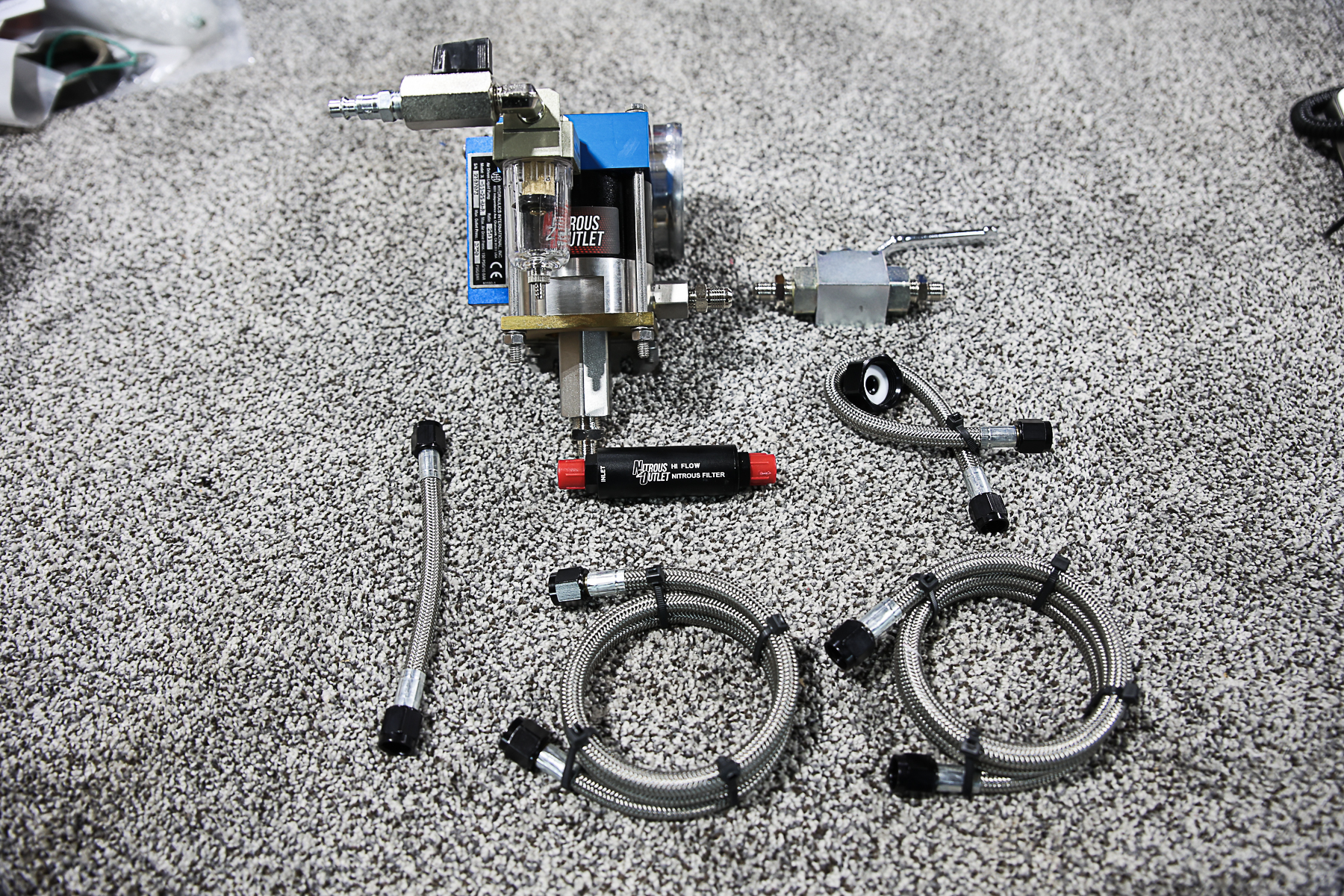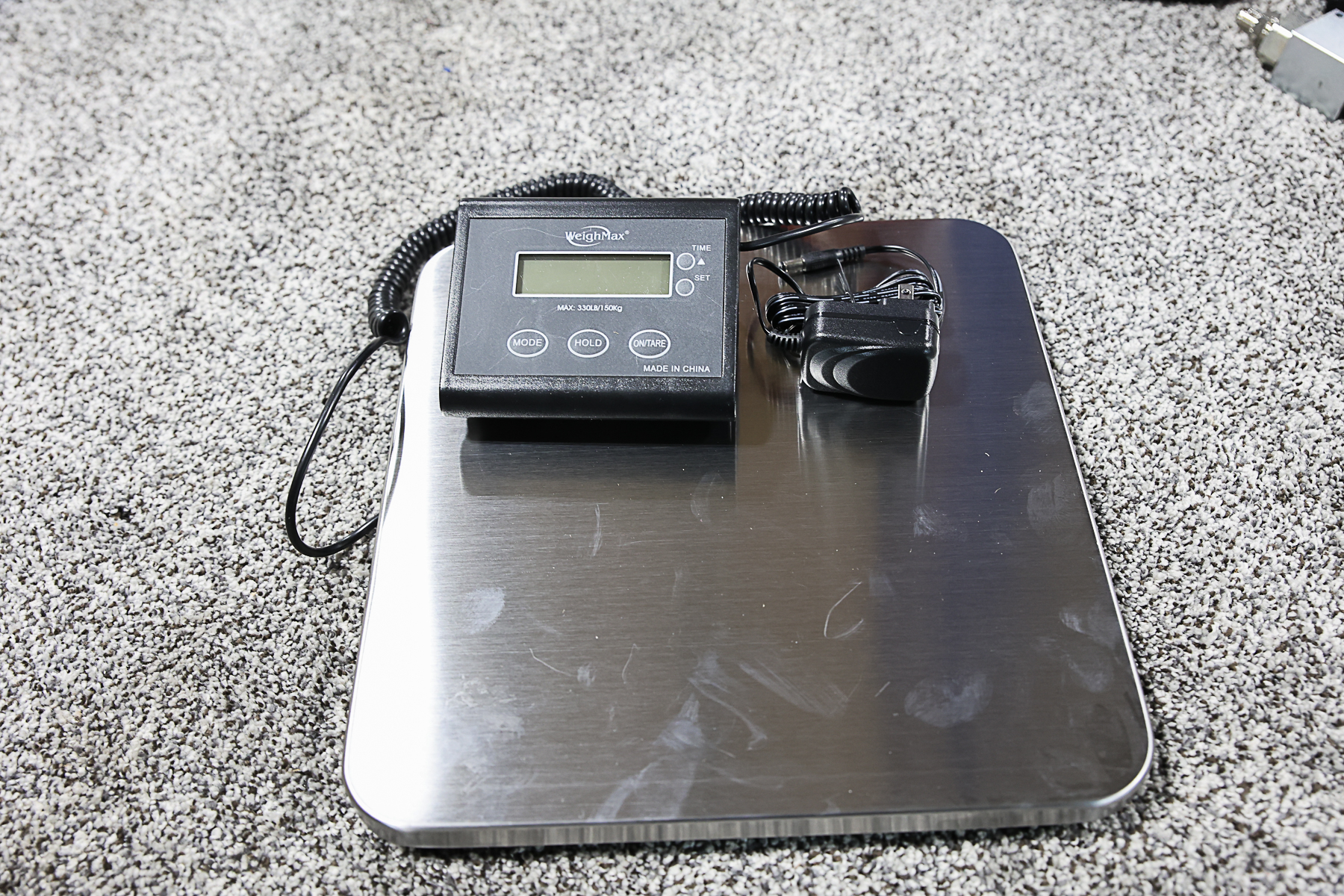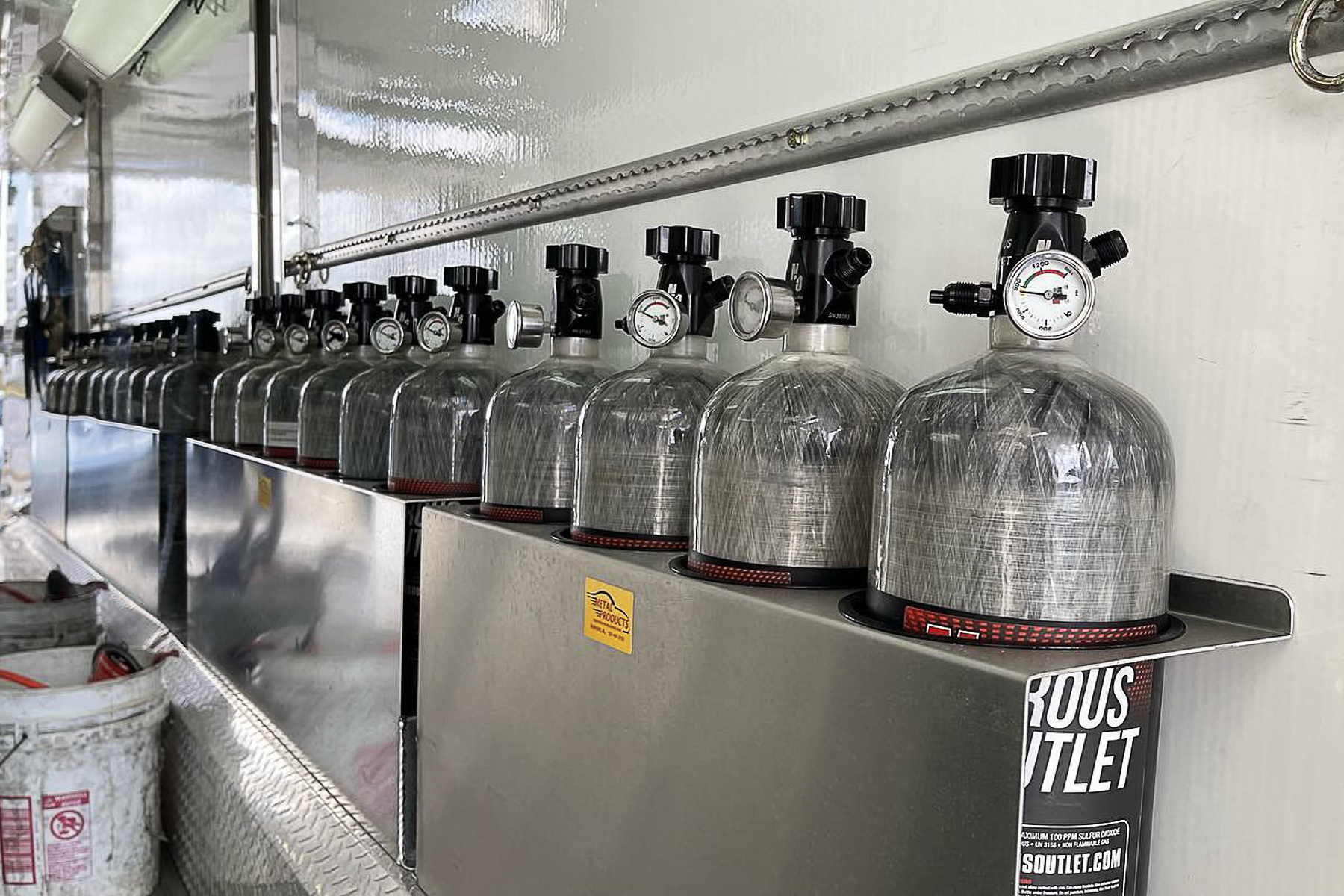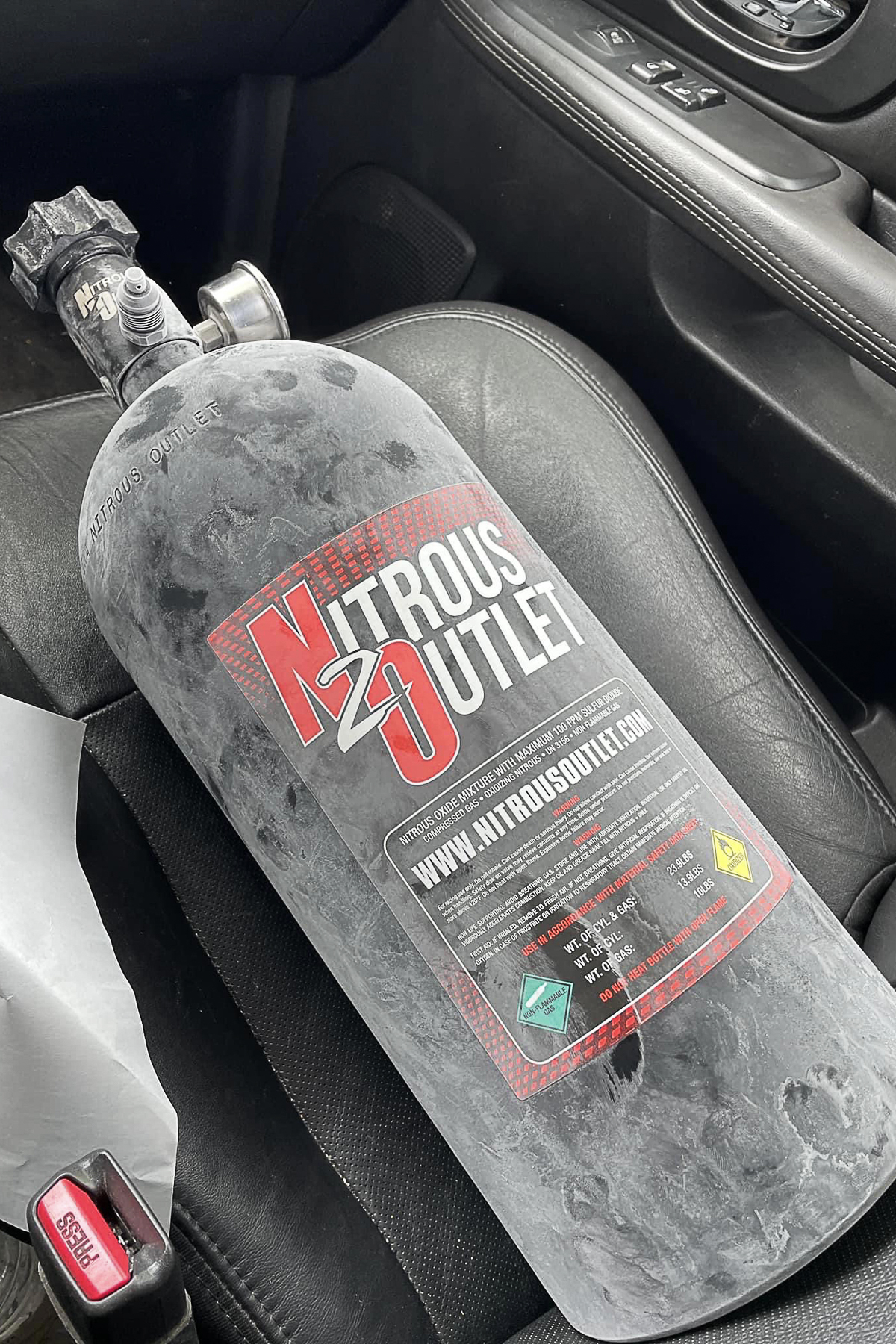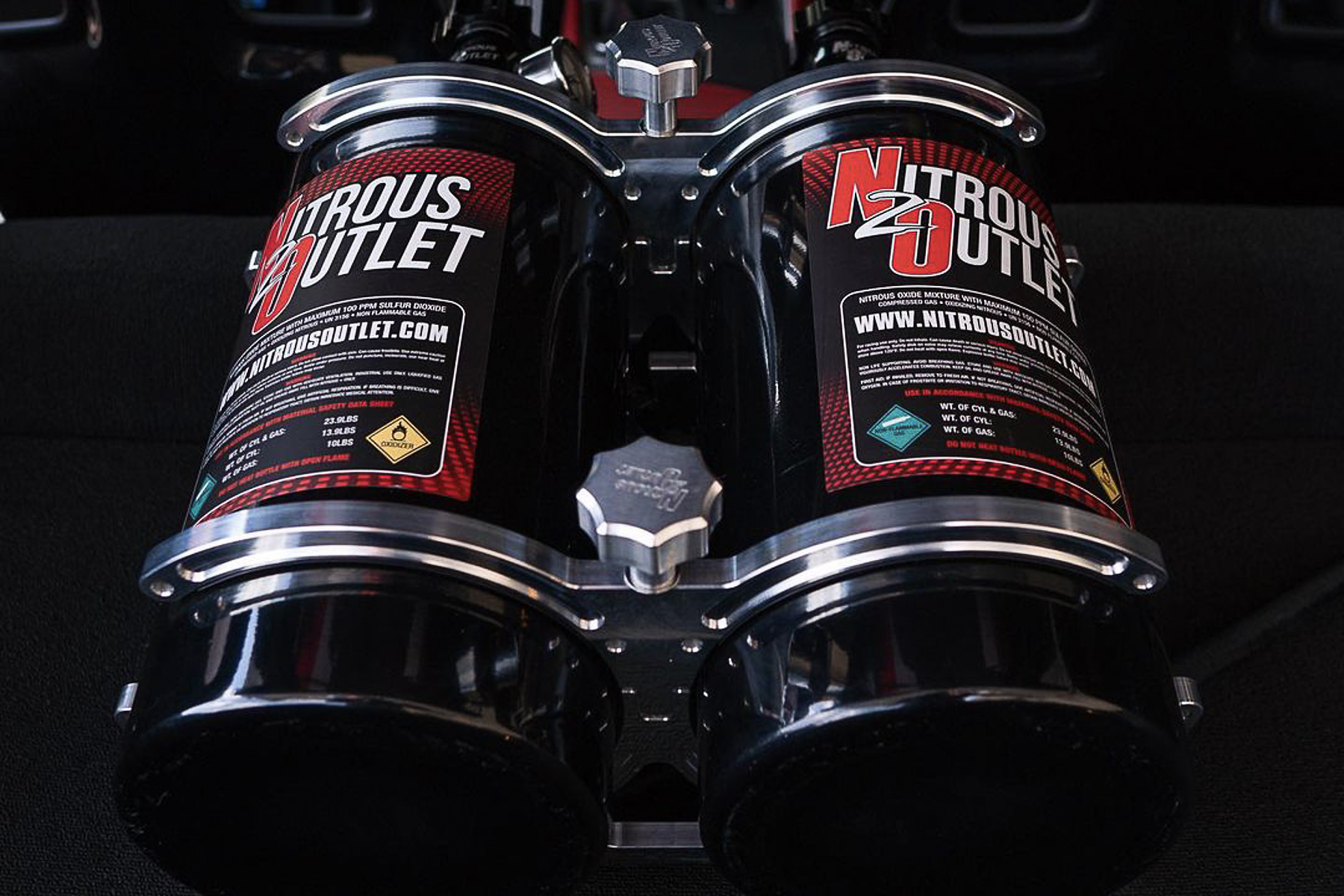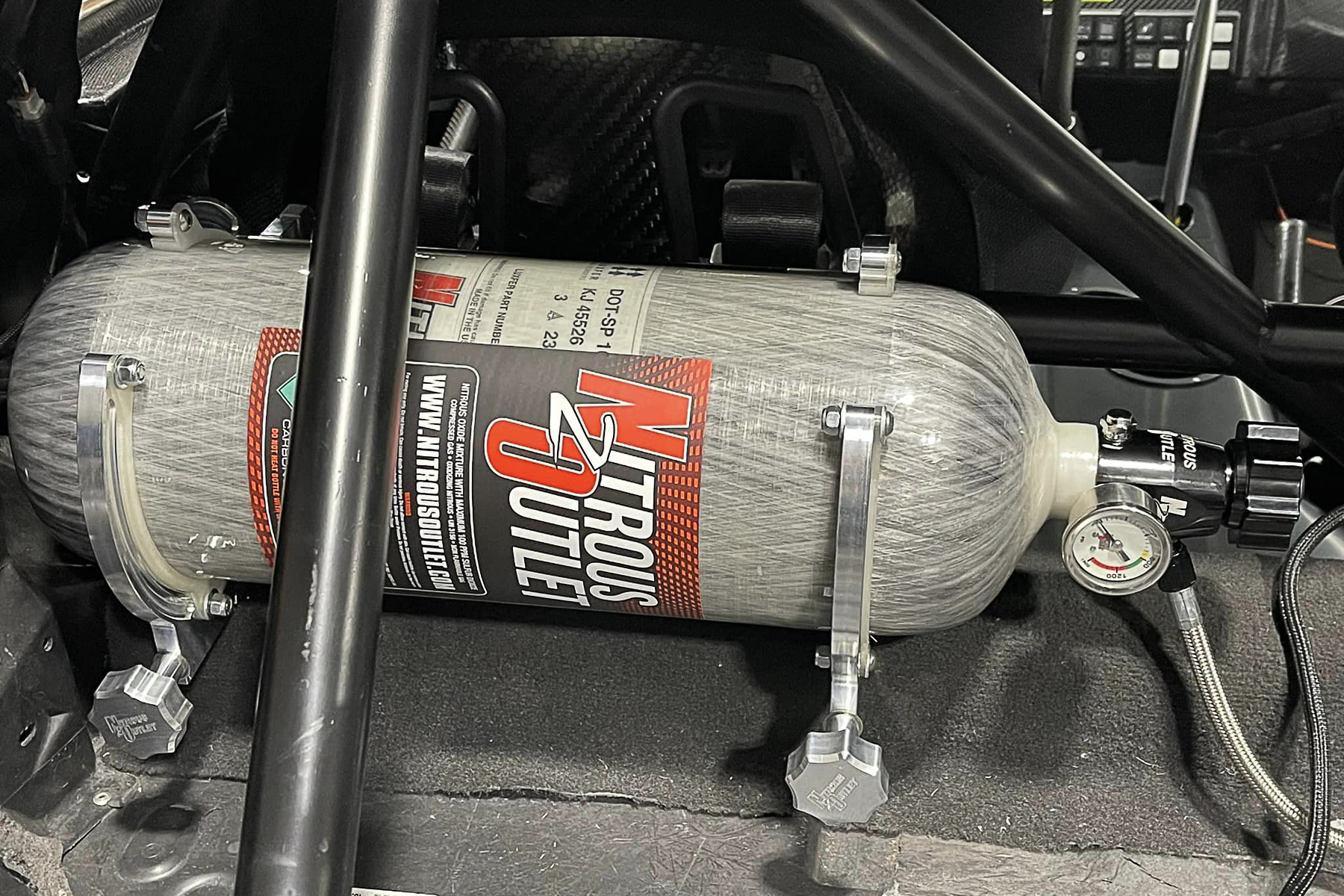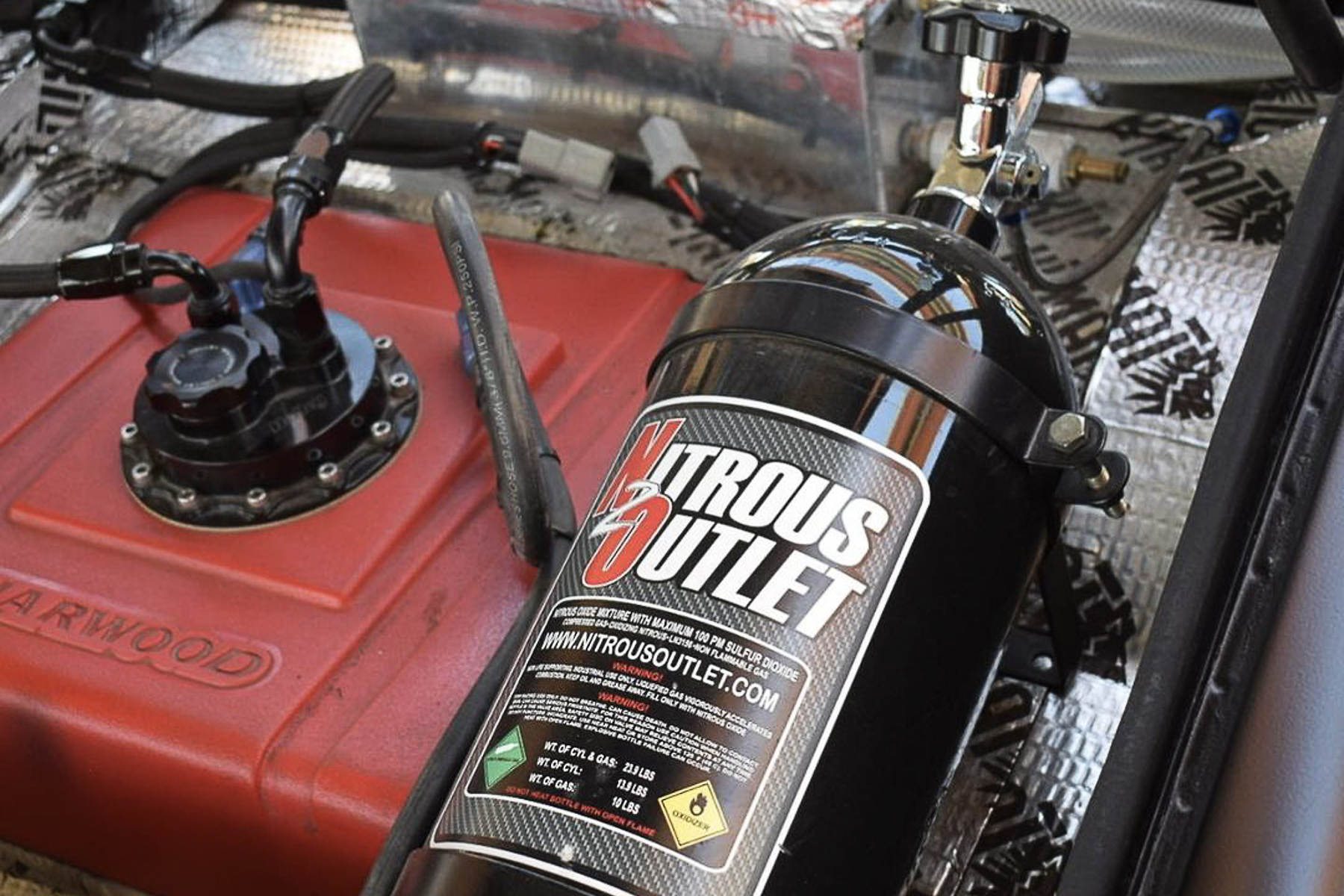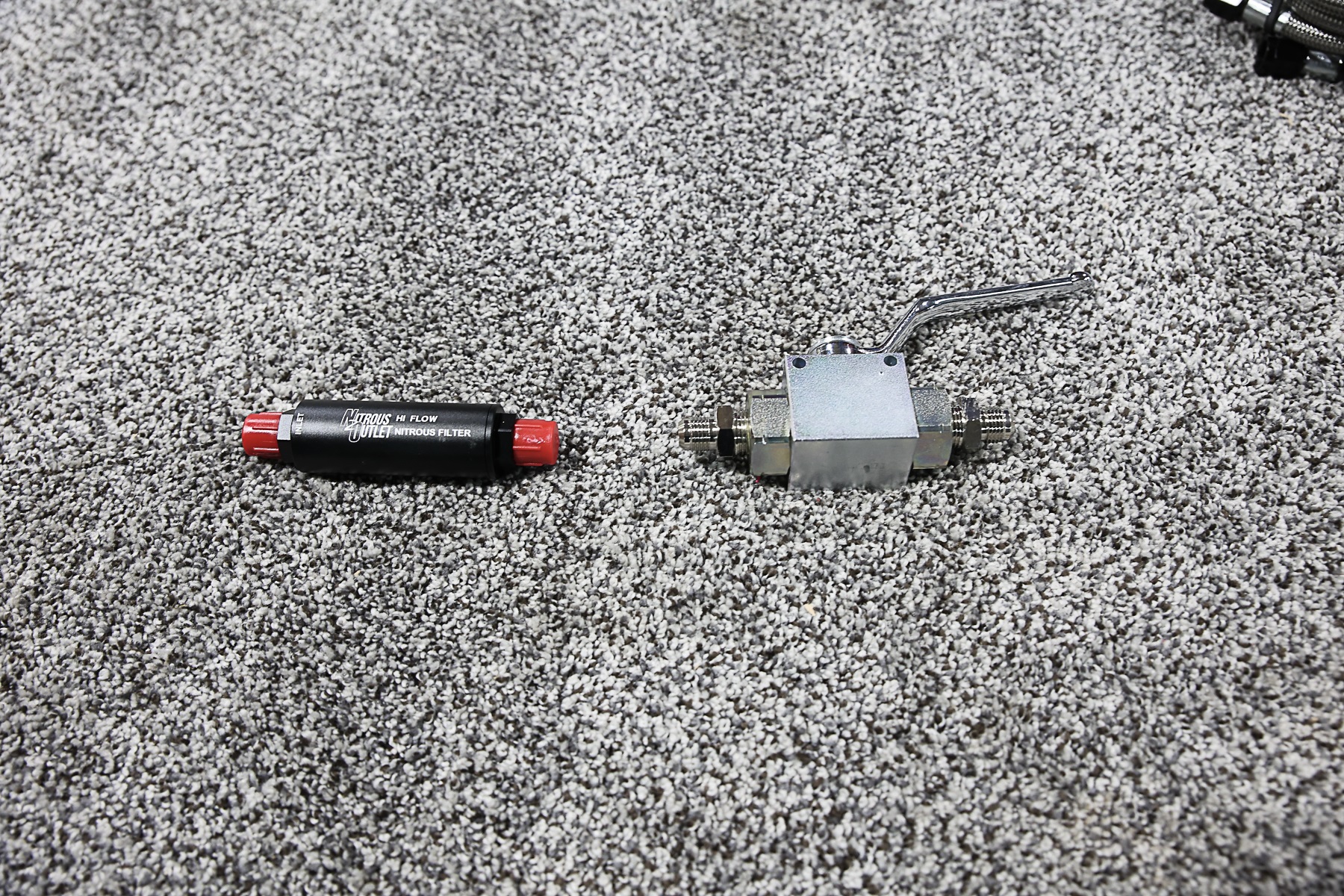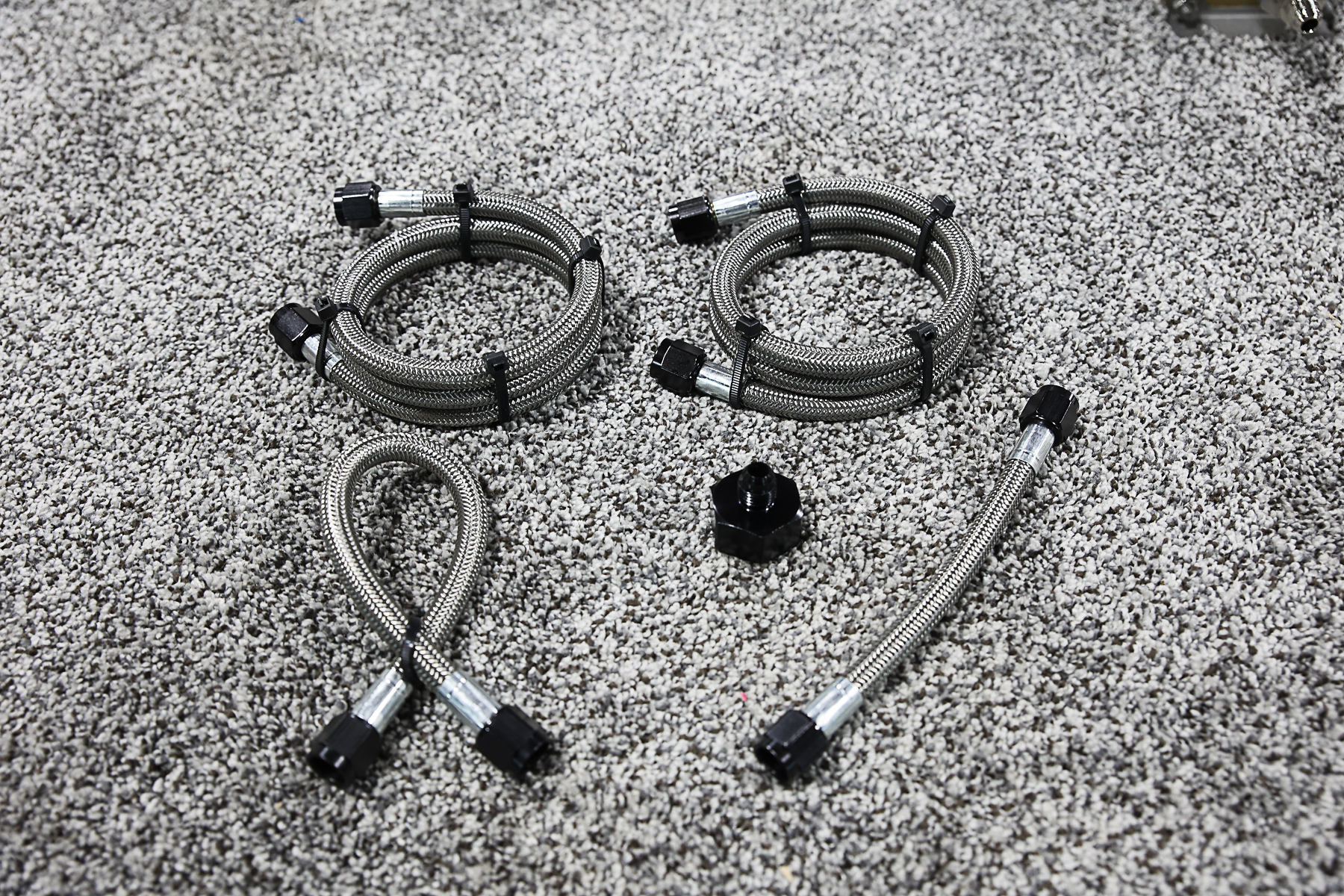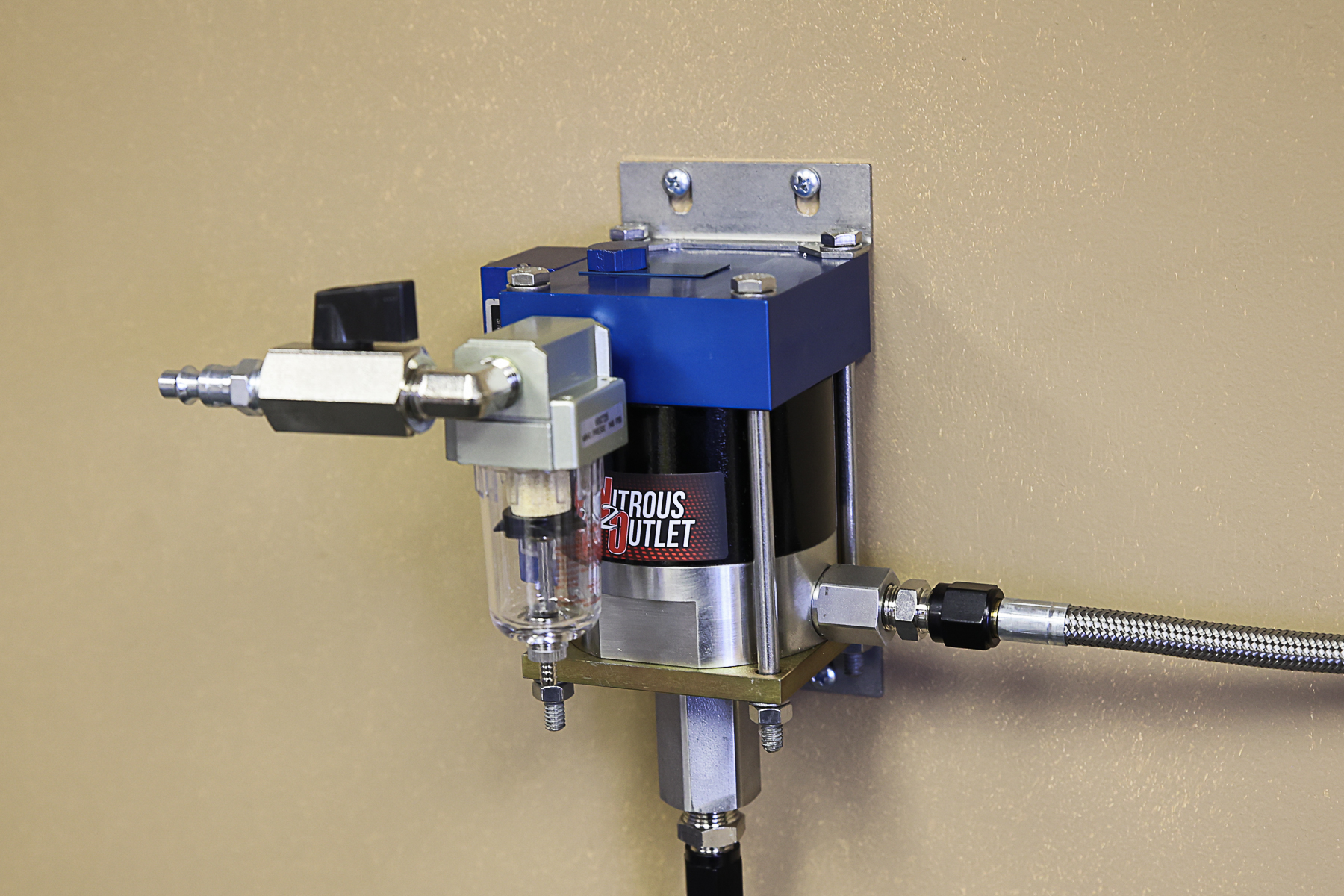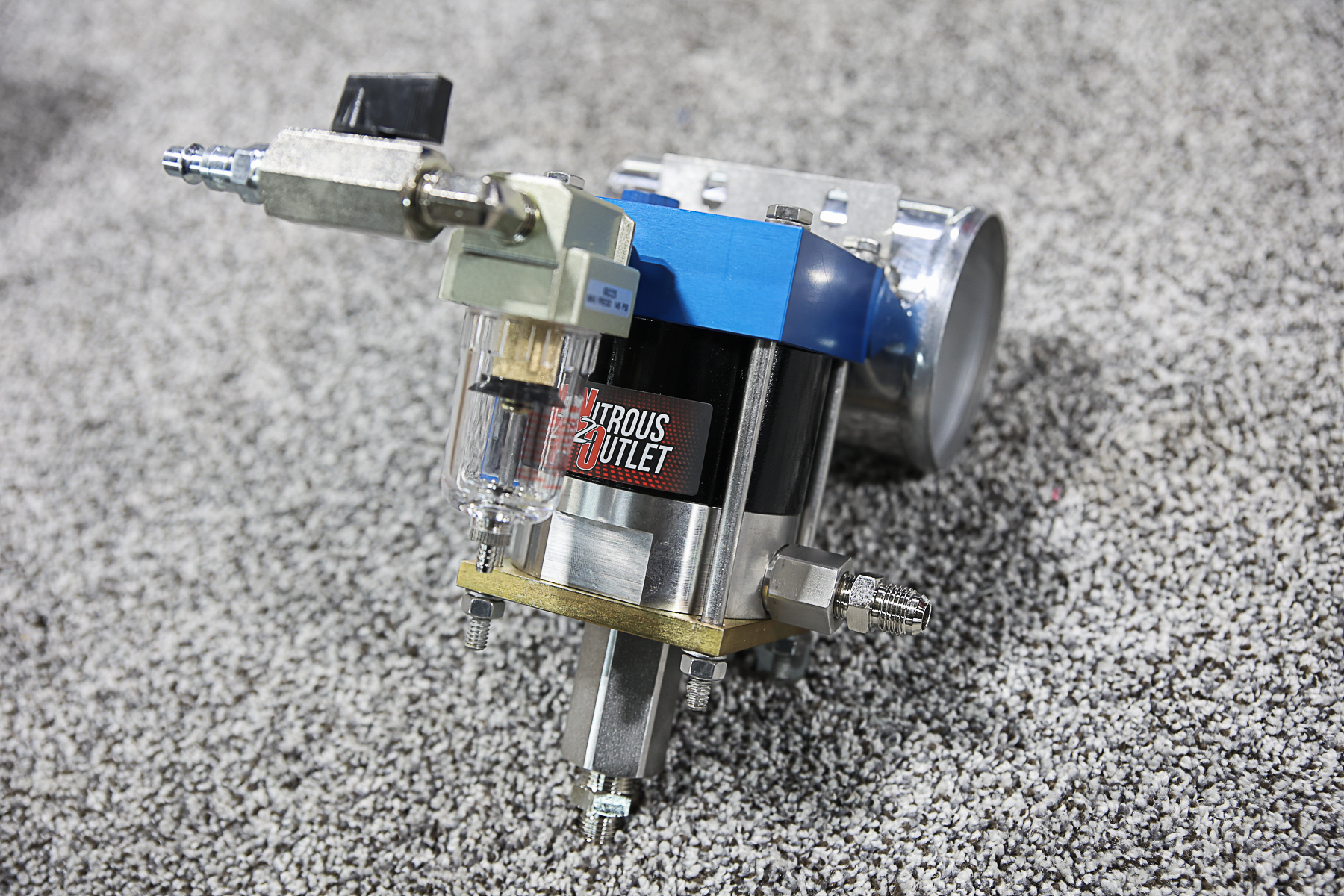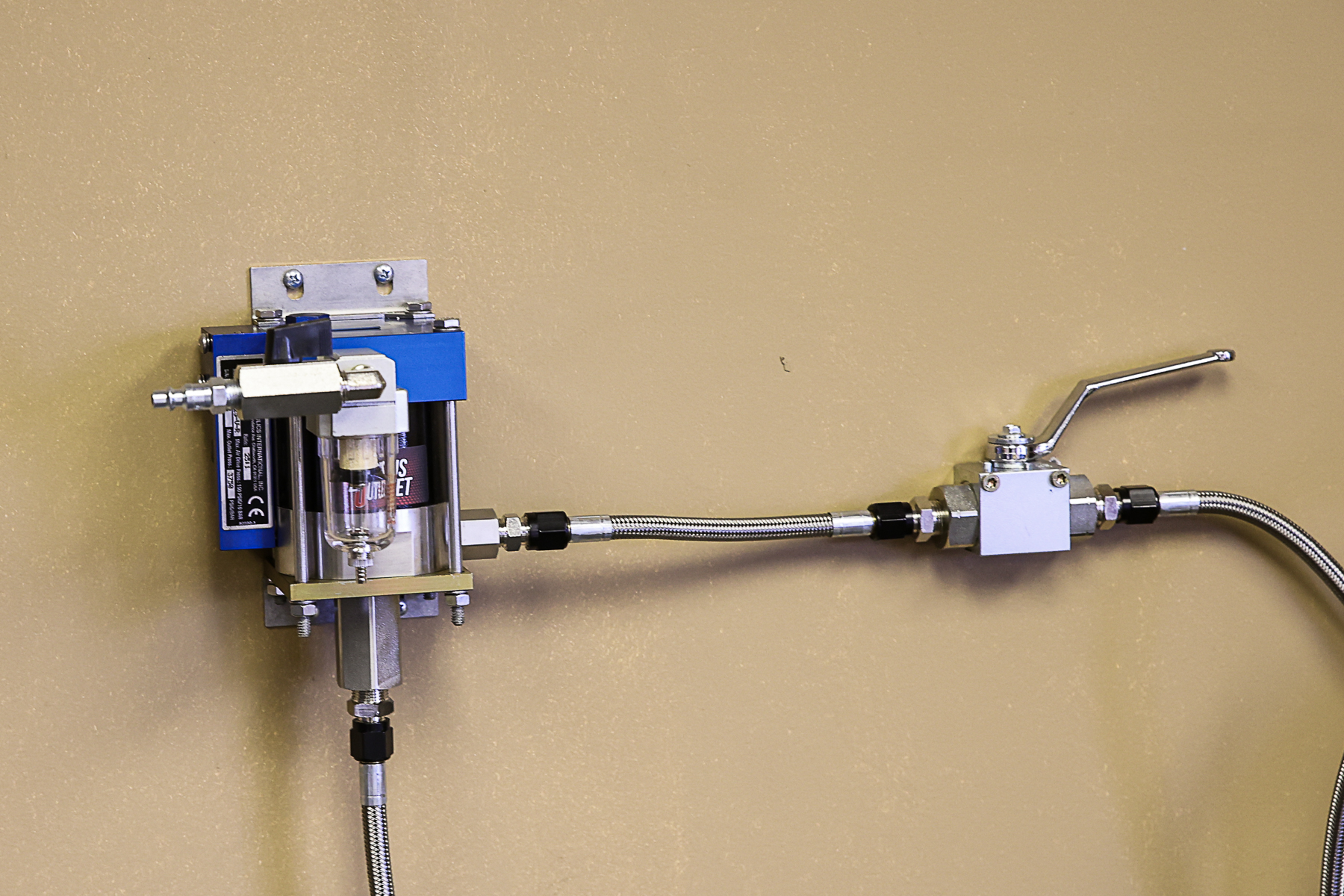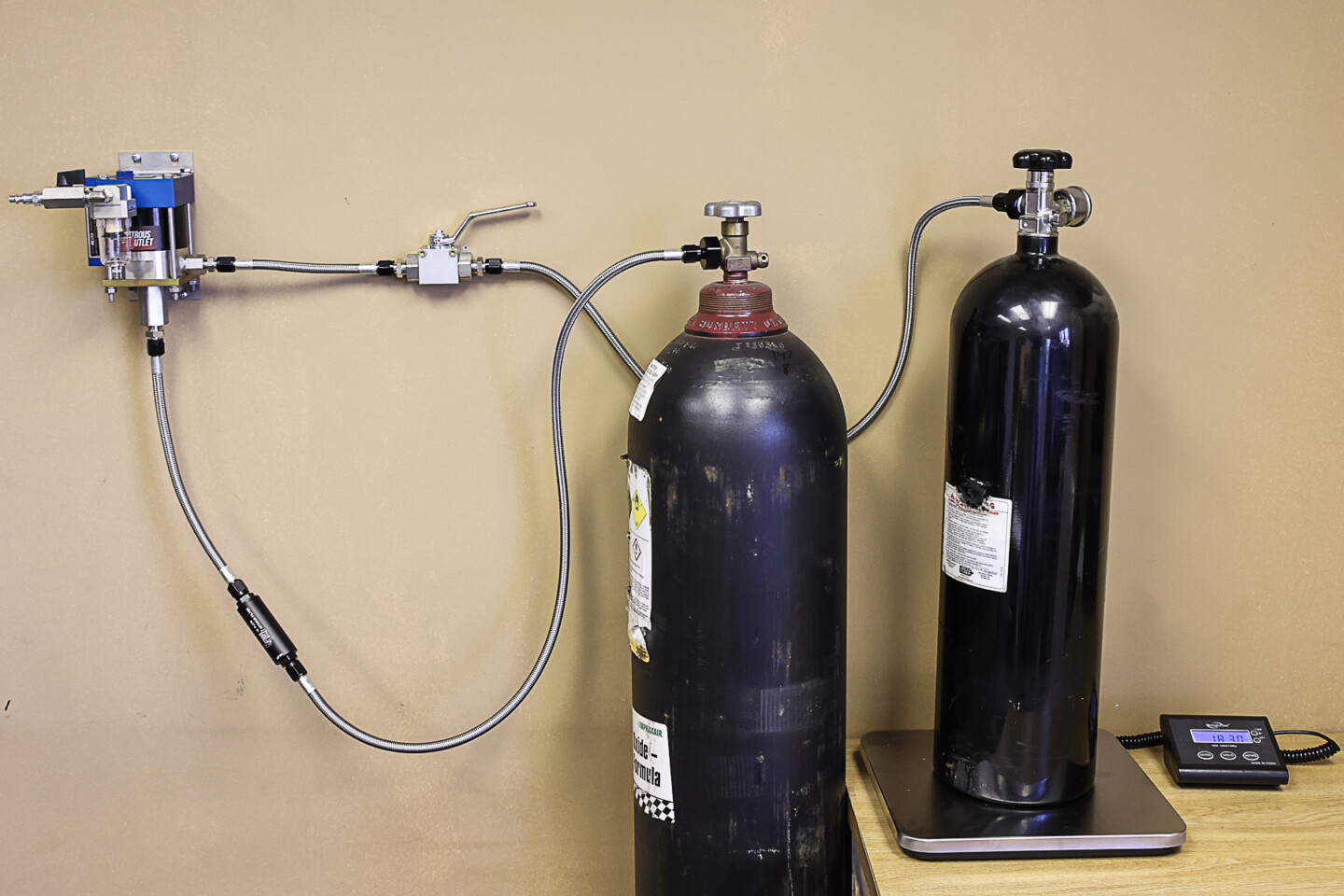Nitrous oxide continues to be a popular power adder for those who want to go fast. You’ll see it used on weekend warrior’s rides, bracket cars, and in the Pro Mod ranks. Getting a nitrous bottle filled can be a challenge if you don’t have a local shop that offers the service, but you can solve that issue by getting your own nitrous pump station and mother bottle.
The average cost to fill a nitrous bottle has gone well over $6 per pound in most areas. If you’re tickling your engine with a lot of giggle juice, that can add up quickly, and that is why many turn to getting their own mother bottle. To properly fill a nitrous bottle, you need a pump station and an understanding of how to use the station. We talked with Mark Wennin from Nitrous Outlet to learn more about nitrous pump stations and how to properly use them.
Nitrous pumping stations really aren't that complex. There are just a few basic parts that make up the system, but how you use the system is what's most important.
Nitrous Pump Station Basics
Nitrous bottles are filled using what’s called transfer filling. You’re moving the liquid nitrous from the mother bottle to the smaller bottle that’s used in the vehicle. Wennin explains how the two main ways of filling a nitrous bottle works.
“Nitrous pumps work by using compressed air to reciprocate a piston to push liquid nitrous from the mother bottle to the bottle being filled. Alternatively, you can use a gravity feed setup, which will transfer liquid nitrous from the mother bottle to the bottle being filled via pressure difference. This is accomplished thanks to a heated mother bottle and cooled bottle that’s being filled.”
The Nitrous pump stations are perfect for shops that fill a large number of bottles and want to get it done fast. Racers can also use a nitrous pump station to fill a bottle quickly at the track. A gravity feed station works in situations where you don’t need to fill a bottle in a hurry. You can also use the gravity feed station if you don’t have access to compressed air to run a traditional pump station.
Racers really can benefit from having a pumping station in their trailer or at the shop. It makes filling bottles quicker and easier when you're pressed for time.
Now, the method you use is going to be influenced by the type of mother bottle you have. It’s very important to know if the mother bottle has a siphon tube inside.
“A siphon tube is a metal tube that runs from the valve to the bottom of the mother bottle. This tube allows the bottle to be used while standing upright. Typically, the mother bottle will have a stamp or sticker on the crown indicating if it has a siphon tube. If your mother bottle doesn’t have a siphon tube, you can use a mother bottle stand to turn it upside down to fill a bottle,” Wennin explains.
A nitrous pump station is a fairly simple setup. The station just needs to have a pump, feed hoses, a ¼ turn valve, a nitrous filter, and an accurate scale. It’s pretty self-explanatory what role the pump, hoses, and filter play in a nitrous filling station, but the ¼ turn valve and scales might get overlooked for their importance. The valve will help save time filling bottles since you can leave the mother bottle open all the time. Since the liquid nitrous that fills and goes into the smaller bottle is measured by weight, it’s important to have an accurate scale.
Have you ever wondered why people try to cool or even freeze a nitrous bottle before they fill it? Well, it’s all about how the transfer filling works.
“Nitrous transfer without a pump works primarily based on pressure differential. The higher the pressure in the bottle you are transferring from, and the lower pressure in the bottle you are transferring to, the more nitrous you can get into the bottle you are transferring to. The nitrous will also transfer more quickly with a greater pressure differential. Even with a pump station, it can be advantageous to freeze your bottles, as you can gravity feed most of the bottle, and just turn the pump on for the last few pounds. It makes it easier on the pump when you have a chilled bottle as well,” Wennin says.
The Dos and Don’ts Of Using A Nitrous Pump Station
We’ve learned what a nitrous pump station is, now it’s time to learn how to properly use it. There are plenty of things you need to know before you start filling bottles. These lessons are critical to not only ensure you’re filling bottles properly, but they will also keep you safe.
The amount of pressure that a nitrous bottle contains is incredible, and each bottle is certified for safety reasons. An aluminum bottle is certified for five years, while a carbon composite bottle is certified for three years. After the certification period ends, a bottle needs to be re-tested and re-certified.
ALWAYS inspect any bottle you plan on filling. Look for any damage, missing or damaged burst disc, and a current certification date.
That said, you need to check every bottle over before you fill it to make sure its certification is current, and that it hasn’t been damaged.
“Any time you are buying a used bottle, or filling one for a buddy, it is a good idea to check it over for deep scratches, dents, and discoloration or burn marks from a torch. DO NOT fill or use any bottles that have these signs of abuse! There are plenty of examples out there of bottles exploding and damaging vehicles and shops as well as injuring people, sometimes severely. Make sure the bottle has the correct certification date and is in good condition,” Wennin states.
Just like the nitrous system in your car, the nitrous pump station needs a filter too. These filters are very important and can prevent some serious problems. A mother bottle isn’t going to be torn down and cleaned often, if ever. That means there’s a lot of debris that can build up inside the bottle over time. The filter is going to catch any of that debris before it can damage your nitrous pump or other parts of the nitrous pump system.
The filter, 1/4 turn valve, and hoses are critical to a nitrous pumping station.
Another thing you’ll want to make sure you do is purge all of the air out of the fill line before you open the valve on the bottle you’re filling. This may sound inconsequential, but it is a very important step you need to complete when using a nitrous pumping station.
“Any air that is trapped in the fill hose will go straight into your bottle once you start filling it, and take up space in the bottle, as well as cause issues when using the nitrous. If your vehicle sounds like the nitrous is turning on and off, or your purge is changing from clear to white and back to clear, you may have an air-filled bottle. If you want consistent runs, be sure to crack the hose end and “purge” the fill hose before you open the bottle valve on the bottle you are filling,” Wennin explains.
The heart of a nitrous pumping station is of course its pump. You'll want to make sure the moisture trap is functioning and the pump is properly maintained.
A nitrous pump station isn’t a maintenance-free piece of equipment. The pump will need to be lubricated and it will let you know that it’s past due for maintenance if it starts running slow or erratically. Wennin recommends tearing the pump down once a year for service and lubrication to prevent any issues.
You’ll want to invest in some PPE that should be worn while operating your nitrous pumping station. At a minimum, you’ll want some type of eye protection and gloves. Here’s why you need to wear PPE and pay attention while filling nitrous bottles.
“Nitrous is extremely cold when it is vented, and can easily burn you or damage your eyes or airways. Be cognizant of where the nitrous cloud will go when emptying the hoses or bottles. Make sure you have secured your hose ends before you open any valves. DO NOT open the ¼ turn with the mother bottle open and the hose end unsecured, as it can easily become an uncontrolled metal whip,” Wennin says.
A detail that’s easy to miss is tracking how much nitrous you’ve pumped out of a mother bottle. It’s a good idea to keep a tally sheet of some kind close to the bottle so you can have a visual reminder.
“Most mother bottles won’t have their full weight worth of nitrous in them, and filling a bottle without enough nitrous in the mother bottle will give you an air-filled bottle. If the bottle you are filling is becoming very hot or you have been pumping for a while with no weight change, you most likely need to empty the bottle and swap in a fresh mother bottle,” Wennin explains.
If you’re a shop or hardcore nitrous user, a nitrous pumping station might be a good investment. You won’t have to worry about getting bottles filled for an event and you might be able to make some extra cash on the side too.




